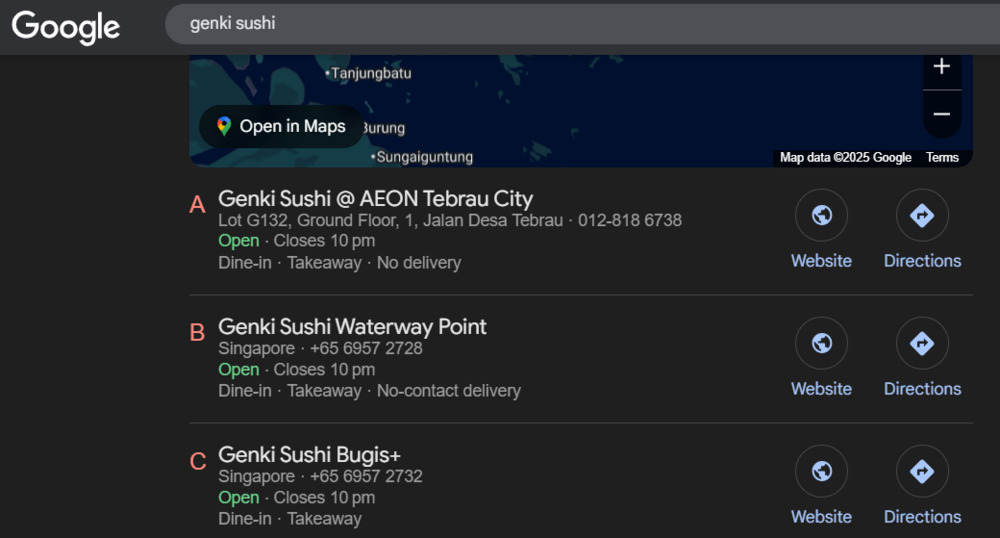Remember when SEO felt like a game of keyword roulette?
You’d sprinkle “best laptops” or “cheap holidays” across your pages and hope Google would notice. Those days are fading fast.
The real game-changer in search engine optimisation now is the brand search, when people type your actual company name into Google.
If you’ve been treating your brand as just another keyword, you’re missing the biggest opportunity in digital marketing.
Let’s explore why branded searches have become the ultimate trust signal, and how protecting your intellectual property through trademark registration can amplify your SEO success.
Table of Contents
What Makes Brand Search Different from Generic Queries?

Brand search happens when someone specifically looks for your company, product or service by name. Instead of typing “organic coffee beans,” they’re searching “Grind Coffee” or “Pact Coffee delivery.”
Here’s the fascinating bit: these searches carry completely different intent.
Generic searches represent curiosity. Branded searches represent decision making.
Think about your own behaviour online. When you search for “running shoes,” you’re browsing. When you search “Nike Air Zoom Pegasus,” you’ve already decided. That’s the power of brand recognition, and Google knows it.
The Intent Volume Balance
Branded searches typically show lower volume than generic terms, but they convert at dramatically higher rates. According to data from WordStream, branded search campaigns often achieve conversion rates 2 to 3 times higher than non-branded campaigns.
This matters because Google’s algorithm has evolved to recognise quality over quantity.
A thousand people searching for your specific company name sends a stronger signal than ten thousand generic searches that bounce immediately.
How Trademark Registration Strengthens Your Brand Search Strategy

Before diving deeper into optimisation, let’s address something crucial: protecting your brand legally amplifies your digital presence.
A registered trademark does three things for your SEO:
- Legal protection: Prevents competitors from bidding on your brand terms in paid search (you can file complaints through Google Ads if they hold a trademark)
- Brand authority: Shows Google and users that you’re a legitimate, established entity
- Search clarity: Helps search engines distinguish your brand from generic terms
Where to Register Your Trademark
Depending on your market, you’ll want to explore:
- USPTO (United States Patent and Trademark Office) for US protection
- IPOS (Intellectual Property Office of Singapore) for Singapore markets
- WIPO Global Brand Database for international trademark searches
- UK Intellectual Property Office for British registration
The TESS (Trademark Electronic Search System) serves as a powerful trademark search system at USPTO, allowing you to conduct a comprehensive trademark search before filing.
This trademark search tool ensures your chosen name hasn’t already been claimed, preventing costly rebrands down the line.
Start with a free trademark search using TESS or the Global Brand Database to conduct a preliminary trademark search.
This initial step helps you understand if your brand name conflicts with existing trademarks. Many businesses skip this crucial research and later discover their “unique” brand name is already registered elsewhere.
Many businesses skip this crucial step and later discover their “unique” brand name is already a registered trademark elsewhere. Don’t let that be you.
Why Branded Searches Signal Authority to Search Engines
Google’s algorithm looks beyond backlinks and keywords. It measures real world interest. When search volume for your company name increases, Google interprets this as a trust signal.
Consider this: Consider Apollo Food Holdings Berhad, the Malaysian FMCG company behind iconic chocolate wafer sticks and layer cakes. The brand has been a household name for generations.
As they modernised their digital presence and maintained consistent brand visibility across channels, their branded search volume strengthened.
This surge improved their rankings for generic terms like “chocolate wafers” and “layer cakes” whilst reinforcing their position as a trusted legacy brand.
The Quality Traffic Advantage
Users conducting a trademark search for your specific brand arrive with context. They’ve heard about you from a friend, seen your advert, or read about you somewhere.
This means:
- Lower bounce rates (they know what they’re looking for)
- Higher time on site (they’re genuinely interested)
- Better conversion rates (they’re further along the buyer journey)
Google measures these engagement metrics. When your branded traffic performs well, it indirectly boosts your authority for related generic terms too.
The Halo Effect on Generic Rankings
Here’s something brilliant: strong brand search performance can lift your rankings for non-branded keywords.
When thousands of people search for “Innocent Smoothies,” Google begins associating that brand authority with related terms like “healthy drinks” and “fruit smoothies.”
This happens because Google understands entity relationships. Your brand becomes an authority entity in your niche, and this authority transfers across your entire content ecosystem.
Understanding search behaviour patterns helps you anticipate how users discover and research your brand across different stages of their journey.
Practical Ways to Dominate Your Brand’s Search Trademark
When someone searches your company name, what appears? You want complete control of page one.
Optimise your homepage meta elements:
- Title tag: Include your company name and primary value proposition
- Meta description: Write compelling copy that encourages clicks
- Schema markup: Use Organisation schema to display your logo, social profiles and contact details directly in search results
When it comes to SEO for B2B companies, controlling branded search results becomes even more critical, as decision makers often research multiple stakeholders before making purchase decisions.
1. Leverage Google My Business for Local Brand Searches
If you operate physical locations, claim your Google My Business profile immediately. This appears in the knowledge panel for local brand search queries, showing:
- Business hours
- Customer reviews
- Photos
- Contact details
- Directions

Genki Sushi Malaysia maintains multiple Google Business Profiles for its outlets across Klang Valley. Search ‘Genki Sushi Sunway Pyramid’ and you’ll find their optimised profile dominating results, complete with menu previews and customer photos.
A strong local SEO strategy ensures your brand appears correctly across all geographic searches.
2. Build Cross Platform Consistency
Your brand name should appear identically across every platform:
| Platform | Why It Matters |
| Website | Primary brand authority signal |
| Social media | Builds brand recognition and searchability |
| Directory listings | Reinforces NAP (Name, Address, Phone) consistency |
| Press mentions | Creates brand entity associations |
| Review sites | Influences reputation and trust signals |
Inconsistency confuses search engines. If your website says “Smith & Co.,” your LinkedIn says “Smith and Company,” and your Instagram says “SmithCo,” Google struggles to connect these as the same entity.
3. Monitor Brand Mentions Across the Web
Unlinked mentions of a company can enhance brand authority, even without hyperlinks..
Tools like Google Alerts, Mention, or Brand24 help track these references. When you spot valuable mentions, reach out politely to request a link. Many publishers will add one if you ask nicely.
Content marketing efforts that focus on thought leadership naturally generate these valuable brand mentions across industry publications.
4. Protect Your Trademarks in Paid Search
Competitors may bid on your brand terms in Google Ads. If you hold a trade mark registration, you can file a complaint through Google’s trademark complaint form.
Google will then restrict how competitors can use your protected terms in ad copy.
Superdrug successfully used this approach to prevent competitors from using their brand name in misleading advertisements, protecting their branded traffic and reputation.
Strategic Google Ads campaigns on your own brand terms ensure you maintain visibility even when competitors bid on your name.
Advanced Strategies for Brand Search Optimisation
While many marketers stop at simple brand awareness, truly savvy organisations leverage advanced strategies for brand search optimisation to turn their name into their most powerful competitive advantage.
1. Create Searchable Sub Brands
Some companies develop memorable product names that become searchable entities themselves.
Apple does this brilliantly with “iPhone,” “MacBook,” and “AirPods” as each generates massive branded search volume.
Even smaller businesses can adopt this approach. A bakery might name signature products “Midnight Brownie” or “Cloud Croissant,” creating memorable terms customers will search for specifically.
2. Use Your USPTO or IPOS Registration for PR
Announcing your registered trademark status creates newsworthy content. Issue a press release when you secure protection, highlighting your commitment to brand quality and authenticity.
This generates media coverage and backlinks while reinforcing your brand authority. Search “trademark announcement press release” for examples of how established companies leverage this news.
3. Amplify Through Social Media Marketing
Social media marketing campaigns that focus on brand storytelling naturally increase branded search volume as audiences remember your name and seek you out later.
Create shareable content that makes people remember your brand name:
- Behind the scenes videos
- Customer success stories
- Unique brand perspectives on industry topics
- Memorable campaigns with distinct hashtag
Benchmarking Your Brand Search Success
Track these metrics to gauge your brand search performance:
- Google Search Console: Filter for queries containing your brand name. Watch how impressions and clicks trend over time.
- Google Trends: Compare your brand search volume against competitors. Look for seasonal patterns or campaign driven spikes.
- Analytics software: Segment organic traffic by branded vs. non-branded keywords. Calculate conversion rates for each segment.
- Brand health surveys: Regularly ask customers, “How did you first hear about us?” Rising unprompted brand awareness correlates with increasing brand search volume.
In order to gain comprehensive tracking, professional SEO Services can implement advanced analytics that reveal exactly how your brand search impacts overall performance.
Turn Your Brand Name Into a Powerhouse Trademark
Brand search represents the ultimate trust signal in modern SEO. When people actively seek your company by name, they’re telling Google, “This brand matters.”
Protect your brand legally through trademarks registration with bodies like the USPTO, IPOS, or the Global Brand Database.
Build it strategically through consistent cross platform presence. Start tracking your branded search volume today.That single metric will tell you everything about your marketing effectiveness.
Track your branded search volume, it’s a powerful reflection of how deeply your brand resonates. Because when people seek you out, it means you’ve made an impact.
Let’s build a brand worth searching for. Contact Newnormz to begin.






